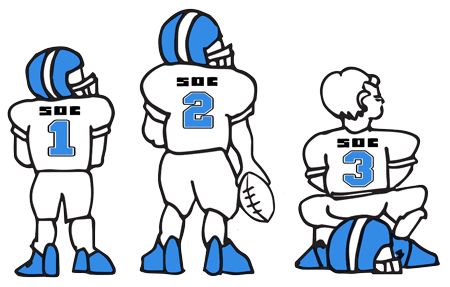ICFiles
SOC 2

Secure File Transfer Soc 2 starts at $1 per month
Understanding Contribution Margin After Marketing
General Business News
October, 2025
Understanding Contribution Margin After Marketing
 Contribution margin after marketing (CMAM) measures how much money is generated per unit retailed after factoring in a company's variable costs, along with marketing costs.
Contribution margin after marketing (CMAM) measures how much money is generated per unit retailed after factoring in a company's variable costs, along with marketing costs.
It's analogous with contribution margin, however, a business must factor in marketing costs the company experiences when publicizing a good to likely consumers with details on the business' wares. This metric determines how well net sales can satisfy expense obligations and what percentage of net sales may remain to satisfy fixed expenses.
Comparing Variable Versus Fixed Costs
Variable costs, as the name implies, are expenses that rise and fall according to output quantities. Fixed costs, conversely, are expenses that don't change despite variation of production quantities. Understanding these concepts is helpful when calculating CMAM to see how both types of expenses impact the different calculations.
CMAM = Sales Revenue - Variable Costs - Marketing Expense
It can also be determined on a per-unit basis to help a business understand how a single product unit contributes to the company's comprehensive profits. One can calculate the CMPU (contribution margin per unit) as follows to provide a more granular analysis:
CMAM/Unit = Sales Revenue/Unit - Variable Expenses/Unit - Marketing Expense/Unit
What separates variable costs (including marketing expenses) from the sales revenue is CMAM. The balance is profit along with fixed costs. To calculate if a business saw a net loss or profit, the formula is:
Net Operating Profit = CMAM - fixed costs
If a profit is reported after subtracting variable costs, costs to market, plus fixed costs, it means a business or specific department is profitable. If it's negative, the business sees a loss that won't enable it to pay its bills.
Illustrating CMAM
When it comes to a company producing widgets, the following is already known. Variable costs for production for a single widget are detailed below:
- $2.25 for unprocessed inputs
- $1.80 firsthand production expenses
- $0.50 power
- $0.40 freight expenses
- $4,500 business equipment rentals
- $6,000 factory rent
- $30,000 management salary
- $10,000 marketing costs
Each widget costs $10, and the business sold 30,000 last year. Therefore, it's calculated as follows:
CMAM = Sales Revenue - Variable Costs - Marketing Expense
Sales Revenue = $10 x 30,000 = $300,000
Variable Costs = ($2.25 + $1.80 + $0.50+ $0.40) x 30,000 = $4.95 x 30,000 = $148,500
CMAM = $300,000 = $148,500
The next step is to calculate net operating loss or profit: we take CMAM ($148,500), then subtract fixed costs:
$148,500 - ($4,500 + $6,000 + $30,000)
$148,500 - $40,500 = $108,000
Based on that calculation, the company producing widgets realized $108,000 for its net operating profit last year. The next section will discuss how businesses can use this information to improve their operations.
Using CMAM for Business Analysis
Managers use this metric to determine the viability of a product. If there are multiple iterations or options of a product, it can help managers determine which product sells the best and rank them if there are multiple versions of a widget. Businesses can analyze each unit’s contribution margin for each version of a widget to determine which versions provide the greatest option for profitability. Depending on the outcome, the company may choose to produce only the most profitable one or two widgets.
When it comes to the CMAM, businesses that use it for analysis can increase their sales efficiency for the present and future.
These articles are intended to provide general resources for the tax and accounting needs of small businesses and individuals. Service2Client LLC is the author, but is not engaged in rendering specific legal, accounting, financial or professional advice. Service2Client LLC makes no representation that the recommendations of Service2Client LLC will achieve any result. The NSAD has not reviewed any of the Service2Client LLC content. Readers are encouraged to contact their CPA regarding the topics in these articles.
Dynamic Content Powered by Service2client.com
SEO Content Powered by DynamicPost.net






